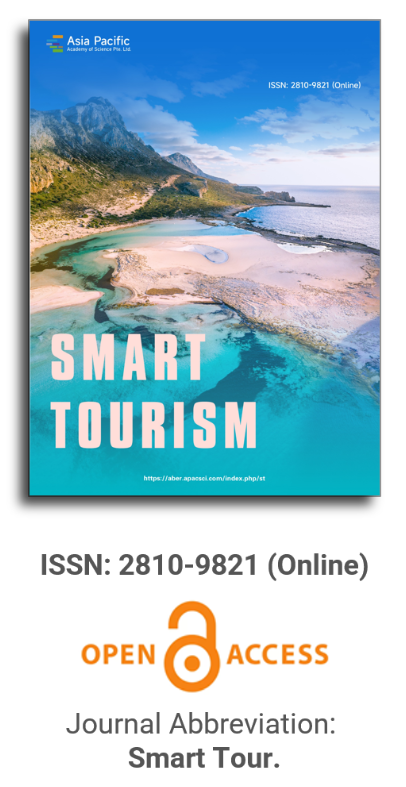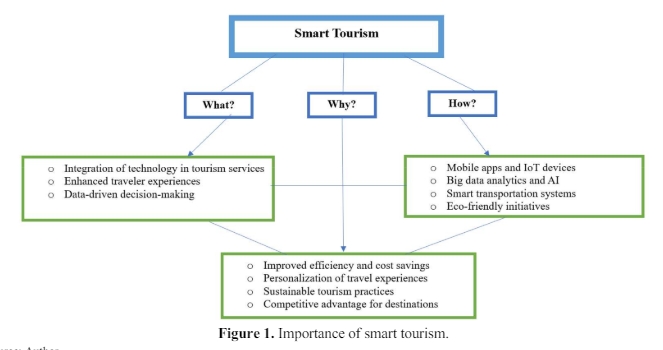


Exploring tourism SMEs crisis management practices during Covid-19 at Boudha, Kathmandu
Vol 5, Issue 2, 2024
Download PDF
Abstract
The worldwide tourism industry alone expanded by 3.9% in 2018, contributing $8.8 trillion in sales and 319 million jobs to the global economy. The COVID-19 pandemic, which began to spread around the planet in 2020, had an impact on every aspect of life. Though many studies have explored COVID-19’s effects on tourism SMEs in Nepal, there’s a significant lack of research on their crisis management strategies during the pandemic. Thus, this study aims to measure the crisis management techniques used by small and medium-sized businesses (SMEs) in the Boudha Area during the COVID-19 epidemic. The study uses an explanatory research design to analyze a comprehensive understanding of how the Boudha Area’s SMEs in the tourism industry handled the crisis of SMEs in the Kathmandu Valley. Non-probability with convenient sampling is used for the study. Data is collected through 403 SMEs using a structural questionnaire, and data collection is done using Kobo Toolbox. Structural Equation Modeling (SEM) using Partial Least Squares (PLS) version 4.0 is adopted for data analysis. The result shows a significant relationship between cost control and expected assistance with crisis management, while marketing and organizational support have an insignificant relationship with crisis management. Similarly, during COVID-19, 90.82% of the businesses had closed their businesses, and 47.89% of SMEs had closed for 3 months. Additionally, 88.09% of SMEs faced losses during COVID-19, and to maintain the crisis 46.4% of SMEs used their income to handle crises during COVID-19, and 93.3% of SMEs reduced their expenses to manage the crisis.
Keywords
References
- Kukanja M, Planinc T, Sikošek M. Crisis Management Practices in Tourism SMEs During the Covid-19 Pandemic. Organizacija. 2020; 53(4): 346-361. doi: 10.2478/orga-2020-0023
- Aldao C, Blasco D, Poch Espallargas M, et al. Modelling the crisis management and impacts of 21st century disruptive events in tourism: the case of the COVID-19 pandemic. Tourism Review. 2021; 76(4): 929-941. doi: 10.1108/tr-07-2020-0297
- Burhan M, Salam MT, Hamdan OA, et al. Crisis management in the hospitality sector SMEs in Pakistan during COVID-19. International Journal of Hospitality Management. 2021; 98: 103037. doi: 10.1016/j.ijhm.2021.103037
- Gössling S, Lund-Durlacher D. Tourist accommodation, climate change and mitigation: An assessment for Austria. Journal of Outdoor Recreation and Tourism. 2021; 34: 100367. doi: 10.1016/j.jort.2021.100367
- Moon MJ. Fighting COVID‐19 with Agility, Transparency, and Participation: Wicked Policy Problems and New Governance Challenges. Public Administration Review. 2020; 80(4): 651-656. doi: 10.1111/puar.13214
- Shortall R, Mouter N, Van Wee B. COVID-19 passenger transport measures and their impacts. Transport Reviews. 2021; 42(4): 441-466. doi: 10.1080/01441647.2021.1976307
- European Parliament. Relaunching transport and tourism in the EU after COVID-19. Available online: https://www.europarl.europa.eu/RegData/etudes/STUD/2021/690884/IPOL_STU(2021)690884_EN.pdf (accessed on 6 April 2024).
- Dias ÁL, Cunha I, Pereira L, et al. Revisiting Small- and Medium-Sized Enterprises’ Innovation and Resilience during COVID-19: The Tourism Sector. Journal of Open Innovation: Technology, Market, and Complexity. 2022; 8(1): 11. doi: 10.3390/joitmc8010011
- Lu Y, Wu J, Peng J, et al. The perceived impact of the Covid-19 epidemic: evidence from a sample of 4807 SMEs in Sichuan Province, China. Environmental Hazards. 2020; 19(4): 323-340. doi: 10.1080/17477891.2020.1763902
- Fleksibel M, Kolaboratif DAN. MSME strategy to survive Covid-19: be flexible and collaborative (Indonesian). Indonesian Treasury Review Jurnal Perbendaharaan Keuangan Negara Dan Kebijakan Publik. 2022; 7(1): 33-47. doi: 10.33105/itrev.v7i1.500
- Shafi M, Liu J, Ren W. Impact of COVID-19 pandemic on micro, small, and medium-sized Enterprises operating in Pakistan. Research in Globalization. 2020; 2: 100018. doi: 10.1016/j.resglo.2020.100018
- Fairlie R. The impact of COVID‐19 on small business owners: Evidence from the first three months after widespread social‐distancing restrictions. Journal of Economics & Management Strategy. 2020; 29(4): 727-740. doi: 10.1111/jems.12400
- Ulak N. A Preliminary Study of Novel Coronavirus Disease (COVID-19) Outbreak: A Pandemic Leading Crisis in Tourism Industry of Nepal. Journal of Tourism and Hospitality Education. 2020; 10: 108-131. doi: 10.3126/jthe.v10i0.28763
- Alves JC, Lok TC, Luo Y, et al. Crisis challenges of small firms in Macao during the COVID-19 pandemic. Frontiers of Business Research in China. 2020; 14(1). doi: 10.1186/s11782-020-00094-2
- Duarte Alonso A, Kok SK, Bressan A, et al. COVID-19, aftermath, impacts, and hospitality firms: An international perspective. International Journal of Hospitality Management. 2020; 91: 102654. doi: 10.1016/j.ijhm.2020.102654
- Mizrak KC. Crisis Management and Risk Mitigation: Strategies for Effective Response and Resilience. In: Mızrak F (editor). Trends, Challenges, and Practices in Contemporary Strategic Management. IGI Global; 2024. pp. 254-278. doi: 10.4018/979-8-3693-1155-4.ch013
- Hinsberg KL, Lamanna AJ. Crisis communication in construction: Organizational strategies for worksite fatalities. Journal of Safety Research. 2024; 88: 145-160. doi: 10.1016/j.jsr.2023.11.002
- OECD. Tourism policy responses to the coronavirus (Covid-19). Available online: https://www.oecd.org/coronavirus/policy-responses/tourism-policy-responses-to-thecoronavirus-covid-19-6466aa20/ (accessed on 6 April 2024).
- Whitelaw S, Mamas MA, Topol E, et al. Applications of digital technology in COVID-19 pandemic planning and response. The Lancet Digital Health. 2020; 2(8): 435-440. doi: 10.1016/S2589-7500(20)30142-4
- Permatasari MG, Mahyuni LP. Crisis management practices during the COVID-19 pandemic: The case of a newly-opened hotel in Bali. Journal of General Management. 2022; 47(3): 180-190. doi: 10.1177/03063070211063717
- Juergensen J, Guimón J, Narula R. European SMEs amidst the COVID-19 crisis: assessing impact and policy responses. Journal of Industrial and Business Economics. 2020; 47(3): 499-510. doi: 10.1007/s40812-020-00169-4
- Subedi SR, Shrestha S. Backbone of the Conservation and Management of the Cultural Heritage: A Case of Guthi System in Nepal. Available online: https://www.preprints.org/manuscript/202401.0162/v1 (accessed on 6 April 2024).
- Gautam D, Chamlagain D. Preliminary assessment of seismic site effects in the fluvio-lacustrine sediments of Kathmandu valley, Nepal. Natural Hazards. 2016; 81(3): 1745-1769. doi: 10.1007/s11069-016-2154-y
- Cochran WG. The Combination of Estimates from Different Experiments. Biometrics. 1954; 10(1): 101. doi: 10.2307/3001666
- Fornell C, Larcker DF. Structural Equation Models with Unobservable Variables and Measurement Error: Algebra and Statistics. Journal of Marketing Research. 1981; 18(3): 382. doi: 10.2307/3150980
- Henseler J, Hubona G, Ray PA. Using PLS path modeling in new technology research: updated guidelines. Industrial Management & Data Systems. 2016; 116(1): 2-20. doi: 10.1108/imds-09-2015-0382
- Alonso-Almeida MdM, Bremser K. Strategic responses of the Spanish hospitality sector to the financial crisis. International Journal of Hospitality Management. 2013; 32: 141-148.
Supporting Agencies
Copyright (c) 2024 Asmita Oli, Niranjan Devkota, Ranjana Kumari Danuwar, Mijala Kayestha, Ajaya Dhakal, Deep Kumar Baral, Dhurba Prasad Timalsina, Amita Koirala, Devi Raman Tiwari
License URL: https://creativecommons.org/licenses/by/4.0/

This site is licensed under a Creative Commons Attribution 4.0 International License (CC BY 4.0).

Prof. Hung-Che Wu
Nanfang College, Guangzhou
China
Indexing & Archiving
Asia Pacific Academy of Science Pte. Ltd. (APACSCI) specializes in international journal publishing. APACSCI adopts the open access publishing model and provides an important communication bridge for academic groups whose interest fields include engineering, technology, medicine, computer, mathematics, agriculture and forestry, and environment.



.jpg)
.jpg)

.jpg)

